We all want our furry friends to look their best and feel comfortable. A great way to do this is by finding the perfect dog collar for your pup. With so many different types of dog collars on the market, it can be difficult to know which one is right for your pup.
Don’t worry, we’ve got you covered! This guide will walk you through the different types of dog collars available so that you can find the perfect match for your pup!
Types of Dog Collars
When it comes to choosing the right collar for your pup, it is important to understand the different types of dog collars available. Each type of collar has its benefits and drawbacks, so it is important to consider your pup’s temperament and size before making a decision.
In this guide, we will cover the different types of dog collars, including standard collars, training collars, flat collars, choke collars, slip collars, martingale collars, breakaway collars, harnesses, head holders, electronic or shock collars, and GPS collars.
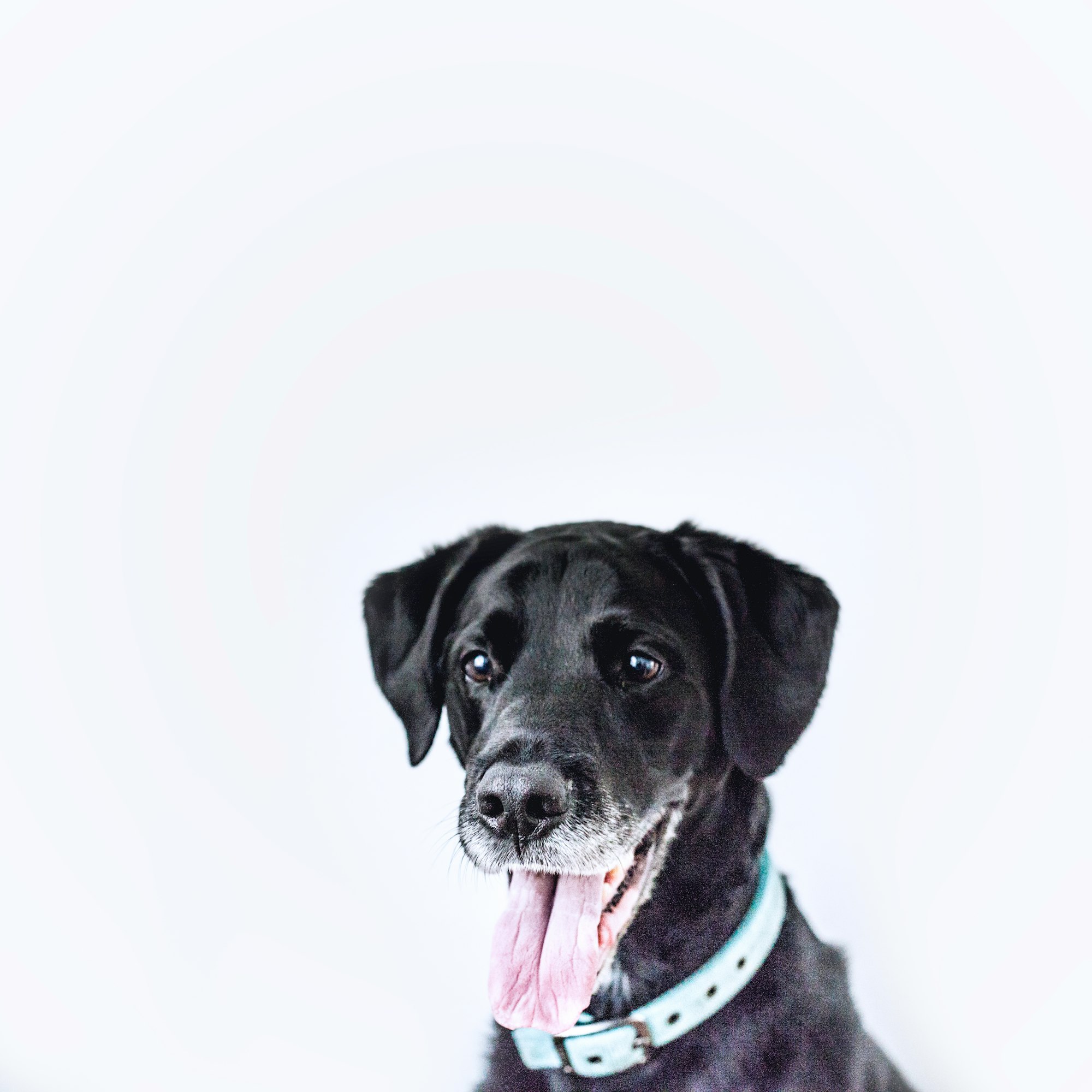
Different Styles of Dog Collars
When it comes to the style of dog collars, there are a few different options.
- Standard collars are the most popular and are usually made of nylon or leather.
- Training collars are designed to help owners train their dogs and often include features such as a buckle or a snap.
- GPS collars are designed to help owners track their pup’s location and are typically made of plastic or metal.
- Flat collars are wide and usually made of nylon or fabric. These collars are perfect for pups who are less active and don’t need to pull on the leash.
- Choke collars are designed to help owners control their pup’s behavior and are typically made of metal or leather. Slip collars are also known as “choke collars” and are designed to be slipped over the pup’s head. These collars are typically made of leather or nylon.
- Martingale collars are designed to tighten when the pup pulls on the leash and are usually made of nylon or fabric.
- Breakaway collars are designed to release when the pup pulls too hard on the leash and are typically made of nylon or fabric.
- Harnesses are designed to evenly distribute the pup’s weight and are typically made of nylon or leather.
- Head holders are designed to help owners keep their pup’s head in place and are typically made of nylon or leather.
- Electronic collars (also known as e-collars) are designed to help owners train their pups and are typically made of metal or plastic.
Standard Collar Vs. Training Collar
Standard collars are the most popular type of dog collars and are designed for everyday use. These collars are usually made of nylon or leather, and come in a variety of colors and designs. Standard collars are perfect for pups who don’t pull on the leash or to hold dog tags and other identifying information.
Typical standard collars include:
- Flat collar
- Buckle collar
- Nylon collars
- GPS collars
Training collars are designed to help owners train their pups and often feature a buckle or a snap. Training collars are typically made of metal or leather, and come in a variety of colors and designs. Training collars are perfect for pups who are more active and need a little extra help staying on track or for puppies who are just learning to walk on a leash.
Collars that are considered dog training collars include:
- Pinch collars
- Head collars
- Bark collars
- Chain collars
- Martingale collars
- Training harnesses, like the easy walk harness, where the leash attaches at the dog's chest on the front of the harness
If your dog pulls on the leash, you may need a training collar and a regular collar.
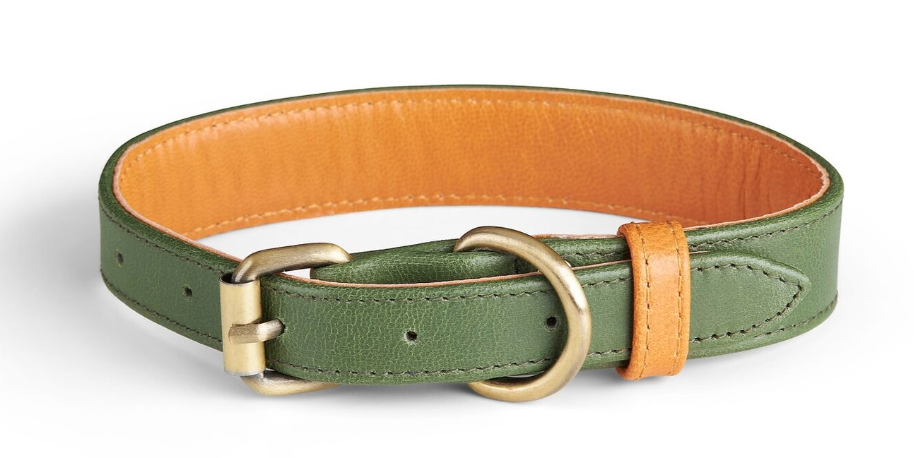
Smart Collars and GPS Collars
GPS collars are designed to help owners track their pup’s location and are typically made of plastic or metal. But these collars do way more than simply track your dog's location. They can also keep track of vital health information for your pup.
Smart collars, like the Fi collar, provide you with real-time GPS tracking information on your dog. If your dog escapes or gets lost, you can track its location using the Fi app. However, this collar also tracks your dog's vital functions, sleep, and activity. This information can provide you with valuable insight into whether your dog is getting enough exercise and rest.
- Designed to be worn every day.
- Provide a sense of security that you will be able to locate your dog if they escape or get lost.
- These collars give you the ability to access information about your dog's health status that you may not otherwise be aware of.
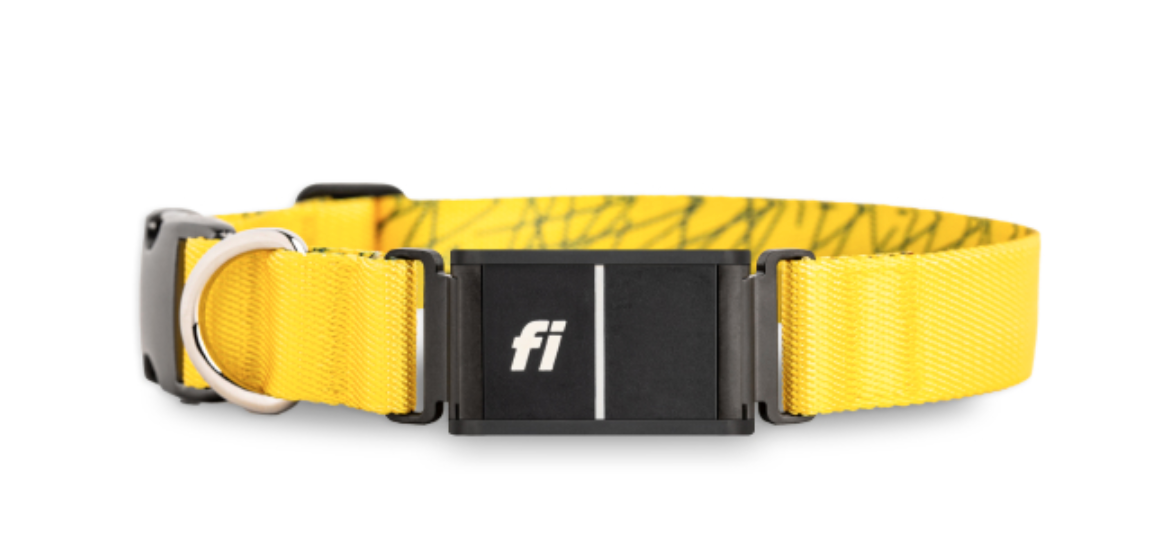
Flat Collars
Flat collars are wide and usually made of nylon or fabric. These collars are perfect for pups who are less active and don’t need to pull on the leash. Flat collars are typically adjustable and come in a variety of colors and designs. These collars are comfortable for your pup and can be easily removed when it’s time to take a break.
- A flat collar is appropriate for everyday wear.
- A flat collar should only be used for walking with dogs who are leash trained and don't pull. Even the most benign-seeming collar can hurt your dog if it is improperly used or fitted.
Choke Collar
Choke collars are designed to help owners control their pup’s behavior and are typically made of metal or leather. These collars are designed to tighten when the pup pulls on the leash, which can help to discourage unwanted behavior. Choke collars should be used with caution and should only be used when necessary.
- Choke chains and choke collars should be used with caution. They are meant as a training tool but can cause damage to your dog's neck and fur if not used properly.
- These collars can be effective for handling large, stubborn dogs.
- When not used properly, choke chains can hurt your dog's head and neck.
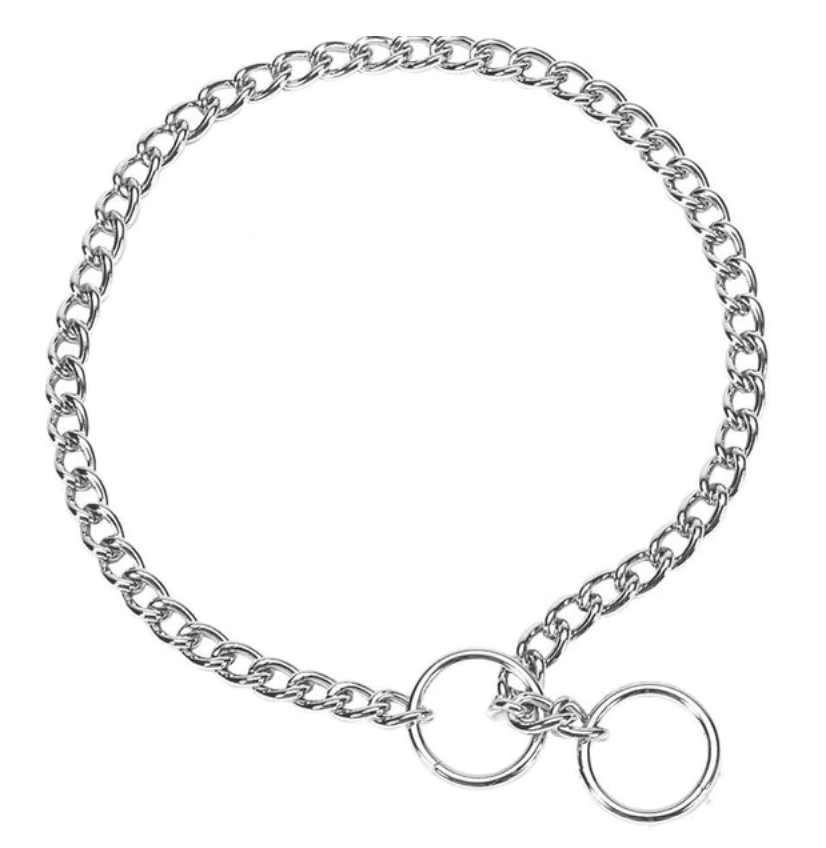
Slip Collars
Slip collars, also sometimes known as “choke collars”, are designed to be slipped over the pup’s head and can tighten or loosen with leash pressure. These collars are typically made of leather or nylon, and come in a variety of colors and designs. Slip collars are training devices that can be effective for handling strong, stubborn dogs.
- While generally considered more human than metal chain collars, slip collars can still cause damage to your dog if used improperly.
- The ability to tighten your grip on your dog's head while walking can be effective for controlling large dogs.
Martingale Collars
Martingale collars are designed to tighten when the pup pulls on the leash and are usually made of nylon or fabric. These collars are perfect for pups who are more active and need a little extra help staying on track. Martingale collars are adjustable and come in a variety of colors and designs.
- Martingales offer more control and are less harsh than choke chains or choke collars, as the collar can only be tightened to a certain level.
- Martingale collars are similar to slip collars in that they slide over your dog's head.
- These collars can be expensive and difficult to find in your local pet store.
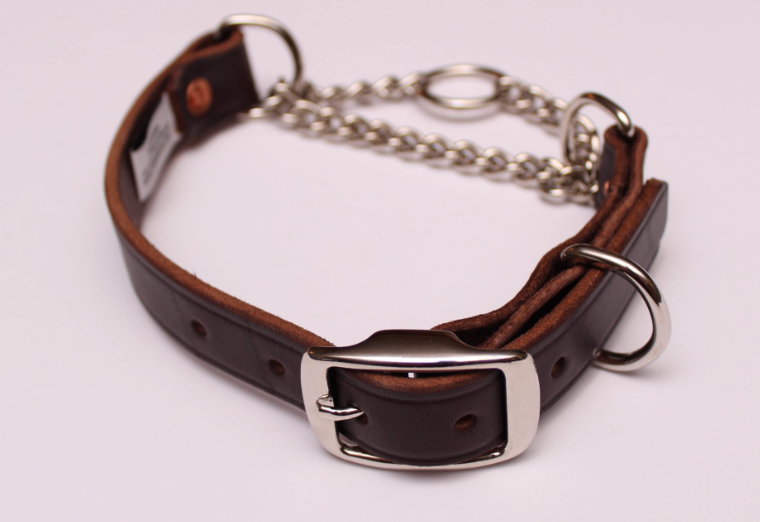
Breakaway Collar
Breakaway collars are designed to release when the pup pulls too hard on the leash and are typically made of nylon or fabric. These collars are perfect for pups who are more active and need a little extra help staying on track. Breakaway collars are adjustable and come in a variety of colors and designs.
Harness
Harnesses are designed to evenly distribute the pup’s weight and are typically made of nylon or leather. Harnesses come in a variety of colors and designs and are perfect for pups who are more active and will be on a leash for long periods.
Some dog breeds, brachycephalic dogs especially, should be walked in a harness instead of a traditional dog collar. This is because they are prone to breathing problems and a collar tightens against the dog's neck, increasing the risk of injury.
- Harnesses are a great choice for puppies who aren't leash trained as they avoid placing unnecessary pressure on your dog's neck.
- Harnesses are usually a safer choice for small dogs.
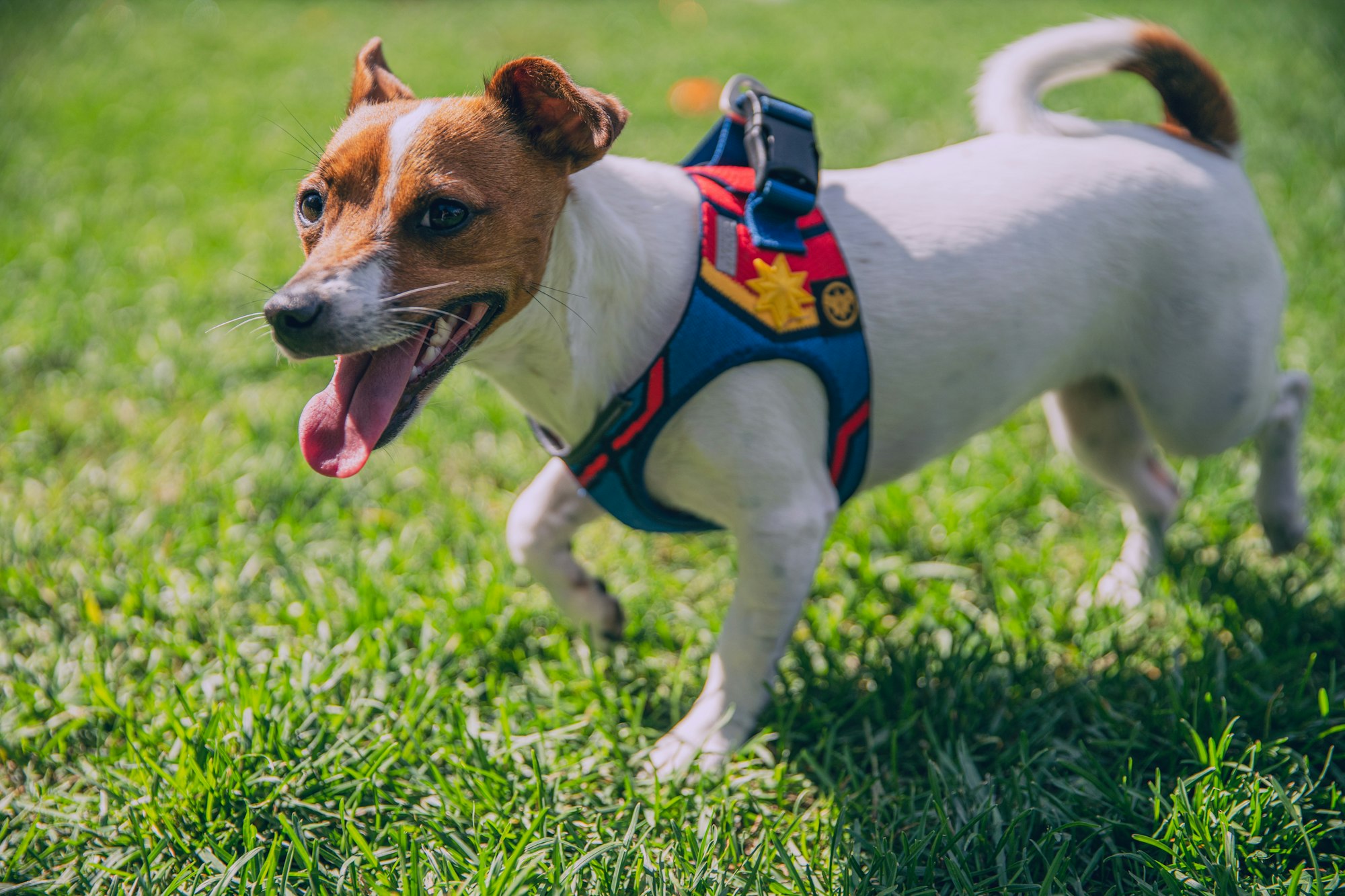
Head Collar
Head holders are designed to help owners keep their pup’s head in place and are typically made of nylon or leather. These collars are perfect for pups who are more active and need a little extra help staying on track. Head holders come in a variety of colors and designs and can be easily removed when it’s time to take a break.
- Allow the handler to maintain control without putting pressure on the neck.
- Many professional dog trainers prefer head collars to choke collars or shock collars.
- These collars are not effective with all dogs and can cause injury if used improperly.
E Collar
Electronic or shock collars are designed to help owners train their pups and are typically made of metal or plastic. These collars are designed to deliver a low-voltage shock when the pup behaves in an undesired manner. Electronic or shock collars should be used with caution and only when necessary.
- Extremely effective at sending messages to your dog from a distance.
- Most collars allow for use of a vibration or a sound without emitting a shock.
- Expensive and can be harsh if not used appropriately.
- Not for use as a regular collar or without supervision.
How to Size a Dog Collar
Getting the right size collar for your dog is essential for their comfort and safety. Picking the perfect collar can be a tricky task, but with the right knowledge and a few helpful tips, you can make sure you get one that fits them perfectly.
Measuring Your Dog for a Collar
The most important step in finding the right size of dog collar is to measure your dog's neck. Measuring the correct part of your dog's neck is crucial to obtaining the right size. There are two ways you can do this:
- Measure the circumference of your dog's neck for fitted collars.
- Measure the length of your dog's neck for adjustable collars.
Measuring circumference
Use a flexible measuring tape and wrap it around their neck where the collar sits. Make sure you can fit at least two fingers between the measuring tape and your dog. Less than two fingers are too tight; more than two are too loose.
Measuring length
If you are measuring for an adjustable collar, you'll need to measure the length of your dog's neck. This is the "collar length," and is the measurement from the base of your dog's neck to the top of their shoulders.
Understanding Size Differences in Dog Collars
Once you've measured your dog's neck, you can determine what size of the collar will fit best. Dog collars come in many different sizes and styles and it's important to select the right size for your pup's neck. Here are a few things to consider when finding the right dog collar for your dog:
- Width - This measurement refers to the collar's thickness. Choosing a collar that's too thick can be uncomfortable for your dog. It will put extra pressure on your dog's neck and make it less likely that it's worn correctly.
- Length - This refers to how long the collar is. A collar loosens and falls off if it's too short. A collar that's too long can get caught on things and put your dog in danger.
- Material - Different collar materials are designed for different uses.
- Sizing - Adjustable collars may come in one size that you can adjust by tightening the strap or sliding a buckle on a buckle collar. Sizing varies between brands, so make sure to check measurements before buying.
Choosing The Right Collar for Your Breed and Activity Level
Each type of collar has its own purpose. Your dog's breed and activity level should play a role in which dog collars are appropriate. If your dog is a puppy, the sizing could be different. Here are some things to keep in mind:
- Large breed dogs like a Pitbull who pull on the leash shouldn't be walked in a standard collar that could cause injury.
- Large, active dogs may benefit from a breakaway collar for everyday wear. These release when excessive force is applied and will avoid injuring your dog if they snag the collar on something.
- If you have a small dog who gets excited, you may want to choose a martingale collar. These are designed to prevent your pup from slipping out of their collar when they get excited.
- Dogs who compete in sports or take long hikes will benefit from a head halter or a front clip harness. These are designed to prevent leash pulling but are comfortable enough for long-term wear.
- If your dog pulls on the leash, you may want to keep your collar or harness leash attachment off your dog's neck. Dogs who pull excessively can cause damage to their trachea when walking using a regular neck collar.
Selecting The Best Material
The material your dog's collar is made from can make a significant difference in your pup's comfort and the collar's durability. Keep in mind that a dog training collar will be designed for short-term wear, while a flat collar will be made for everyday wear - the material of a dog training collar may not need to be as comfortable as their everyday collar.
Here are some common materials you can choose from for your dog's collar:
- Leather collars - Leather collars are great for outdoor use, as they are waterproof and extremely durable. They are also comfortable for your dog to wear for long periods. Usually, when you choose leather, you are also choosing a buckle collar.
- Nylon dog collars - Nylon dog collars are breathable, comfortable and a great choice for everyday wear. While they are often soft and comfortable, they're not as durable as leather and are prone to fraying or coming apart.
- Metal - Pinch collars, or prong collars, are often made from metal. Without debating the necessity of using a harsh training tool, these collars are not comfortable to wear long-term. While a prong collar or pinch collar may be used for certain situations if your dog pulls, they should be used for training only.
Metal buckles on collars can be uncomfortable on your dog's neck when they are worn in the cold. Dog owners may want to consider the outdoor conditions when choosing a collar material.
How To Choose the Perfect Dog Collar
- Size matters - Having the right dog collar size for your pup is essential for comfort and safety. A collar loosens when it is too big and may fall off. A collar that's too tight may cause discomfort.
- Comfort is key - Above all else, your dog should be comfortable wearing the collar around its neck. If you're looking for a collar that's worn every day, rough and thick materials can cause chafing and irritation.
Dog Collars Vs. Head Collars Vs. Harnesses
If you are unclear about the differences between collars and harnesses, you're not alone. A head collar has an entirely different purpose than a collar or harness.
A head collar, head halter, or "halti" as they are often known is meant to stop dogs from pulling. The leash attaches underneath a dog's snout and places pressure on the top of your dog's snout when they pull. Some dog breeds do well walking with a head collar and others don't. Likewise, some trainers swear by this type of training tool, while others prefer other collar materials and types.
Dog collars and dog harnesses have similar functions, but some important differences:
- Collars are less secure.
- Harnesses are usually more comfortable and allow more freedom of movement when walking on a leash.
- Dog owners will find collars easier to take on and off and more suitable for daily wear.
- Harnesses don't have ID tag clips, so you will need a collar, even if you choose to use a harness.
- Just like some collars help with training, some harnesses like the Easy Walk harness, have a leash attachment at your dog's chest to avoid pulling on the leash. Others have a D-ring on the dog's back where the leash attaches.
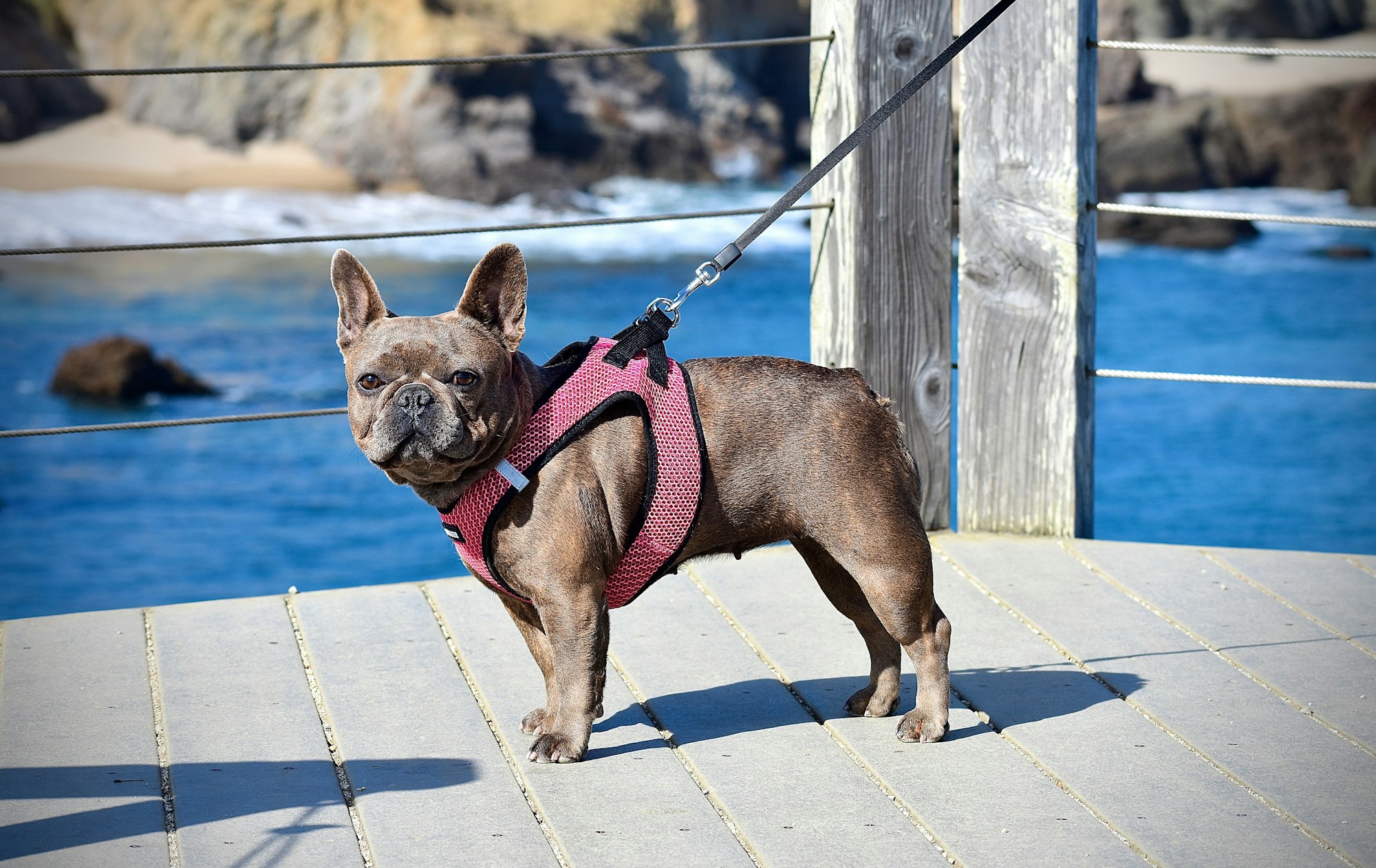
Collar Safety Tips
Like any piece of equipment, proper care and maintenance of your dog's collar will improve its longevity. Here are some tips for keeping yours in top condition:
- Make sure the collar is fastened around your dog's neck correctly.
- Choose a collar designed for your dog's activity level and breed (for example, don't choose a neck collar to walk a brachycephalic dog as it risks injury to the dog's neck).
- Clean your pup's collar regularly. You may want to use disinfectant to keep it clean and bacteria-free.
Choosing a Collar for a Puppy
Puppy collars should follow the same rules of fit as adult dog collars. They should be made of material that doesn't irritate your dog's neck and shouldn't be too loose or too tight. Puppies grow fast, so an adjustable collar is usually ideal. While you may still have to buy a new collar in a few months, an adjustable one will last longer than a collar that's only one size.
A breakaway collar can be a good idea for active pups. They allow your dog to get used to wearing a collar but prevent them from being injured if they get it caught. Keep in mind that most puppies will need a training collar of some sort, especially large dog breeds who tend to pull on the leash. Loose leash walking is best achieved when you start training early.
Which Collar is Best?
Ultimately, the best type of collar is the one that works for both you and your dog. Most owners will find that they need one collar for everyday wear and one for training.
The best everyday collars include a flat collar or a GPS smart collar that runs on cellular data, like the Fi collar.
Training collars, halters, and harnesses vary greatly and include shock collars, choke collars, martingales, harnesses, and head collars. Assessing your training goals, your dog's breed, and your personality can help you choose. If you are unsure of the best training tool, consider consulting with a professional dog trainer.
Conclusion
Choosing the perfect dog collar for your pup can be a daunting task, but it doesn’t have to be. In this guide, we have covered the different types of dog collars available, including standard collars, training collars, flat collars, choke collars, slip collars, martingale collars, breakaway collars, harnesses, head holders, electronic or shock collars, and GPS collars.
We have also discussed how to size a dog collar, safety tips for wearing a dog collar, and features to consider when choosing the perfect dog collar for your pup. Now that you have the knowledge and tools to choose the perfect dog collar for your pup, you can take the next step in giving your pup the best care possible!
For more helpful articles about pet-parenting tips, check out the Off Leash blog at TryFi.com.
Want to know more about TryFi.com? The Fi Dog Collar is a GPS tracking collar that not only keeps track of your dog’s location, activity levels, and sleep patterns, but it also alerts you if your dog escapes your backyard. This is the fastest way to find your dog after an escape. Try the Fi Dog Collar today!





